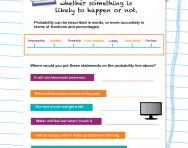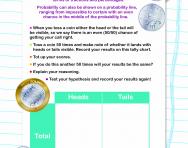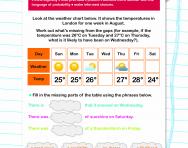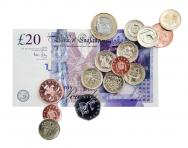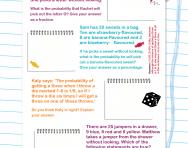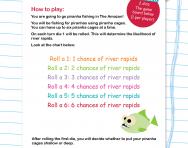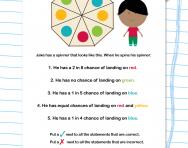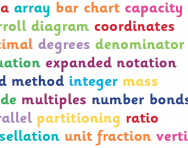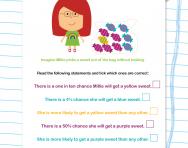What are probability / chance / likelihood?
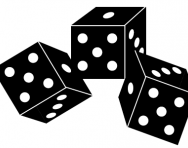
What is probability?
Probability tells us how likely something is to happen.
Probability can be described in words, or more accurately in terms of fractions and percentages.
Probability can also be shown on a probability line:

Learning about probability
Children may learn about probability as part of their learning about data handling. They may be given a question similar to the following:
Mary has these shapes in a box:
If she puts her hand in the box and takes a shape without looking, what is the probability that she will take out a triangular shape?
Children are expected to answer a question such as this with a fraction. In this case, the answer would be: 3/12 (because three of the 12 shapes she might pick are triangles). They may be asked to give this fraction in its simplest form, in which case, the answer would be 1/4.
Probability questions will often involve mention of spinners:
Katy has this spinner.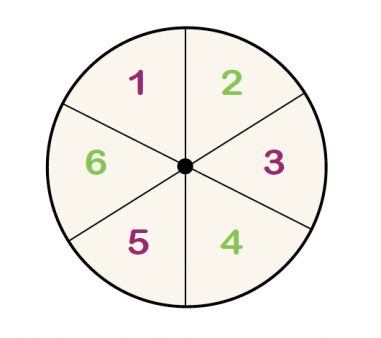
The chance of the spinner landing on an even number when she spins it is 3/6, which can be simplified to 1/2.
a) What is the chance of her getting a square number?
b) What is the chance of her getting an odd number?
Simplify your answers.
Answer: 1 and 4 are square numbers, so the chance of her getting a square number is 2/6, which can be simplified to 1/3. 1, 3 and 5 are odd numbers, so the chance of her getting these numbers is 3/6, which can be simplified to 1/2.

Give your child a headstart
- FREE articles & expert information
- FREE resources & activities
- FREE homework help


